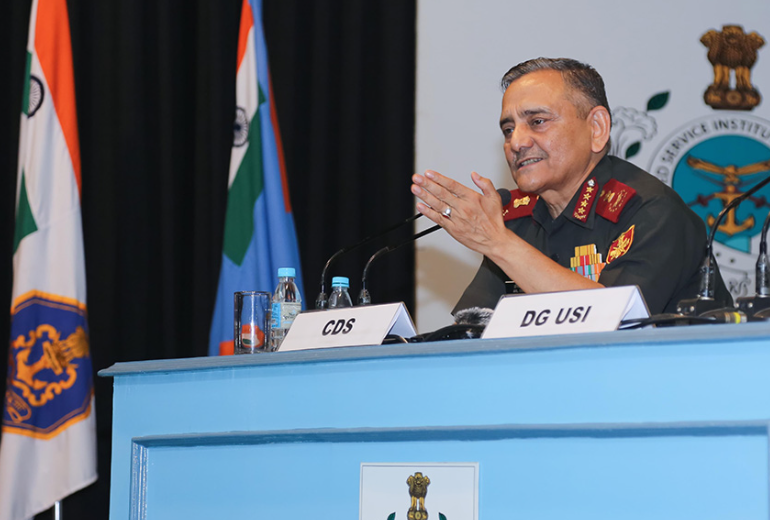Jointness 2.0: Joint Culture in Armed Forces (GS Paper 3, Defense)

Why in News?
- The Chief of Defence Staff (CDS) has called upon the three services to create a Joint Culture which are prerequisites to the creation of functional Integrated Theatre Commands (ITC).
About the Joint Culture’ in Armed Force
- The Indian Armed Forces have embarked on a transformative journey towards fostering a ‘Joint Culture’—a strategic initiative aimed at enhancing interoperability, efficiency, and combat readiness across its military branches.
Importance and Need
- The concept of Joint Culture within the armed forces is not merely about uniformity; it’s about harmonising the distinct strengths and capabilities of the Army, Navy, and Air Force to forge a cohesive, formidable force.
- In an era where threats are becoming increasingly complex and multi-dimensional, the need for a unified approach to defence strategy and operations is paramount.
- Jointness & Integration are prerequisites to the creation of functional Integrated Theatre Commands,
- The creation of such commands will separate the ‘operational’ functions from the Raise-Train-Sustain (RTS) and other administrative functions, and will allow greater focus of the operational commander to matters of security
- Integrated Theatre Commands will lead to many reforms like Single to Multi Domain operations, fusing space and cyberspace into traditional domains, digitisation of battlefield information and visualisation, net centric to data centric among others.
India’s Stride Towards Jointness
- India’s Chief of Defence Staff (CDS) has been a vocal advocate for the development of a Joint Culture.
- He emphasised the need for a de-novo approach that respects the uniqueness of each service while distilling the best of each to enhance war fighting ability and interoperability.
- The Indian Armed Forces have taken concrete steps towards this goal with initiatives such as the establishment of Integrated Theatre Commands (ITC).
- These commands are designed to streamline operational functions and foster a joint operational structure, propelling the forces into the next orbit of military preparedness
- The ‘Joint Training Doctrine Indian Armed Forces – 2017’ underscores the importance of synergy and integration among the services. It serves as a foundation for promoting diplomacy, civil-military interface, and stimulating creativity for enhanced joint operations.
- Various initiatives of symbology that were being processed towards fostering the Joint Culture, including Tri-Services participation in national events.
Challenges
- The path to achieving a Joint Culture is fraught with challenges.
- These include overcoming inter-service rivalries, aligning strategic objectives, and ensuring equitable resource allocation.
Conclusion and the Way Forward
- The pursuit of a Joint Culture in the Indian Armed Forces is a testament to India’s commitment to building a ‘Future Ready’ military.
- By embracing this culture, the forces aim to achieve greater strategic depth, operational flexibility, and a robust defense mechanism capable of countering contemporary and future threats.
- As the Indian Armed Forces continue to evolve, the Joint Culture will undoubtedly be the cornerstone of its quest for integrated military excellence.
- Joint Culture, though different from Service specific Culture, needs to respect the uniqueness of each service.


